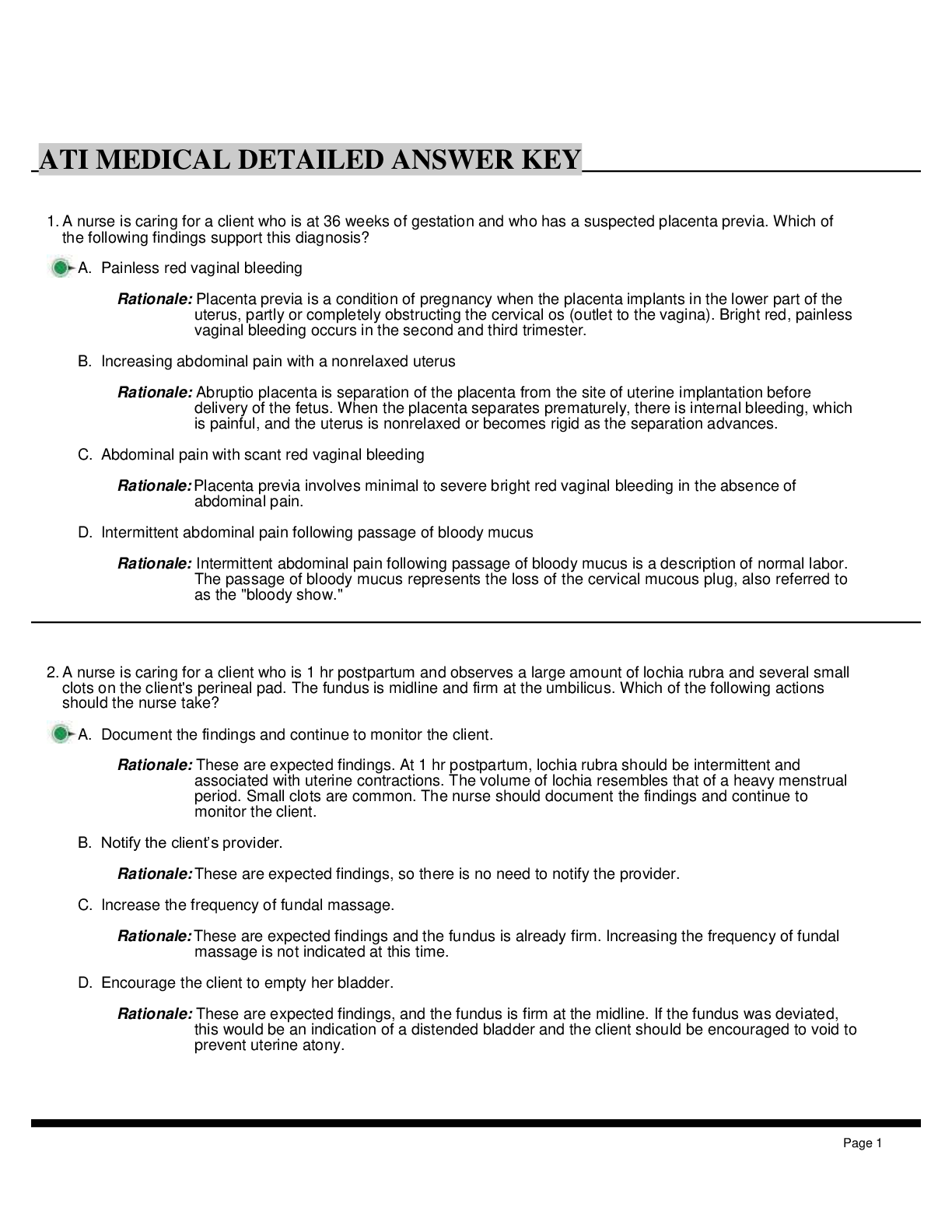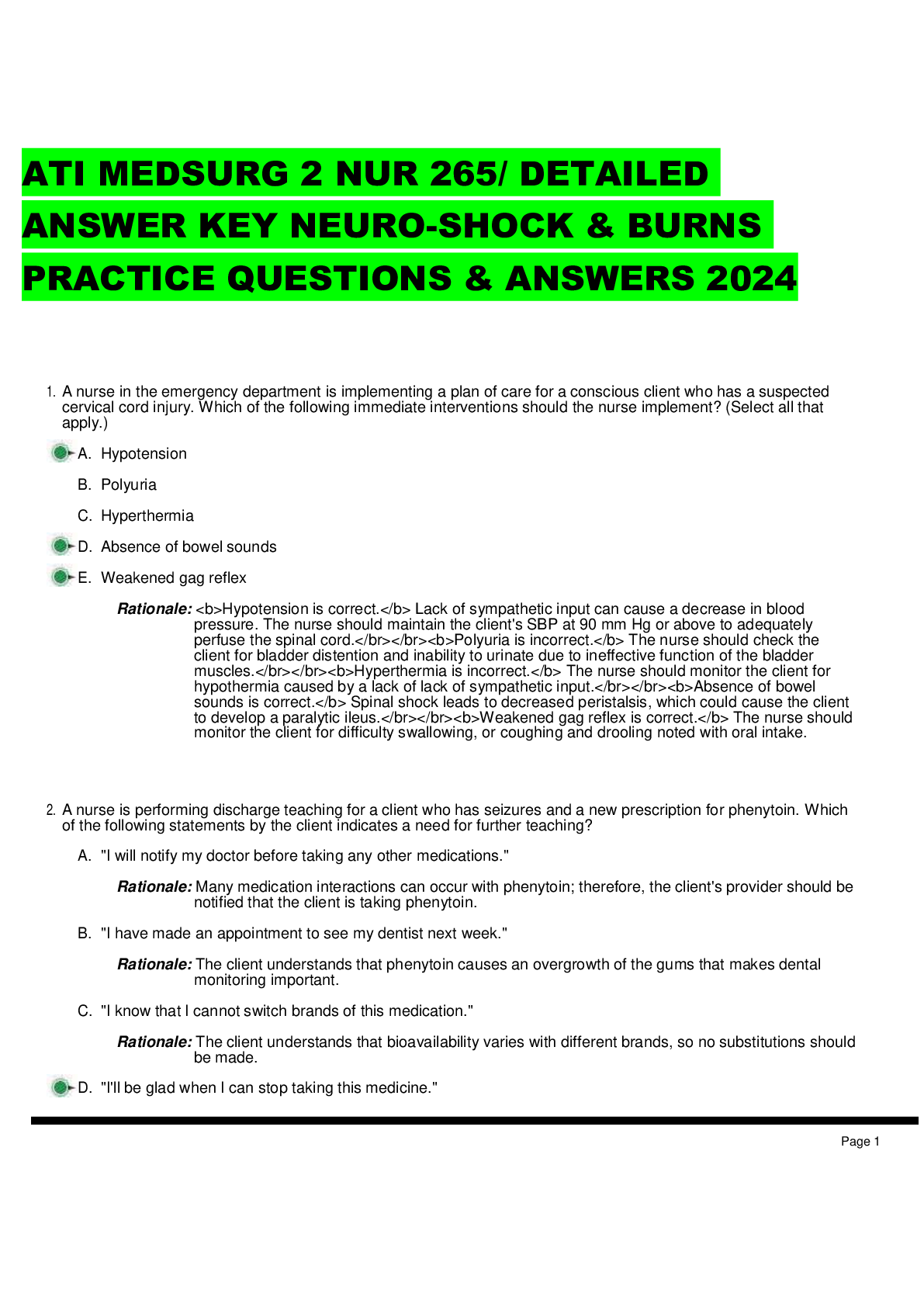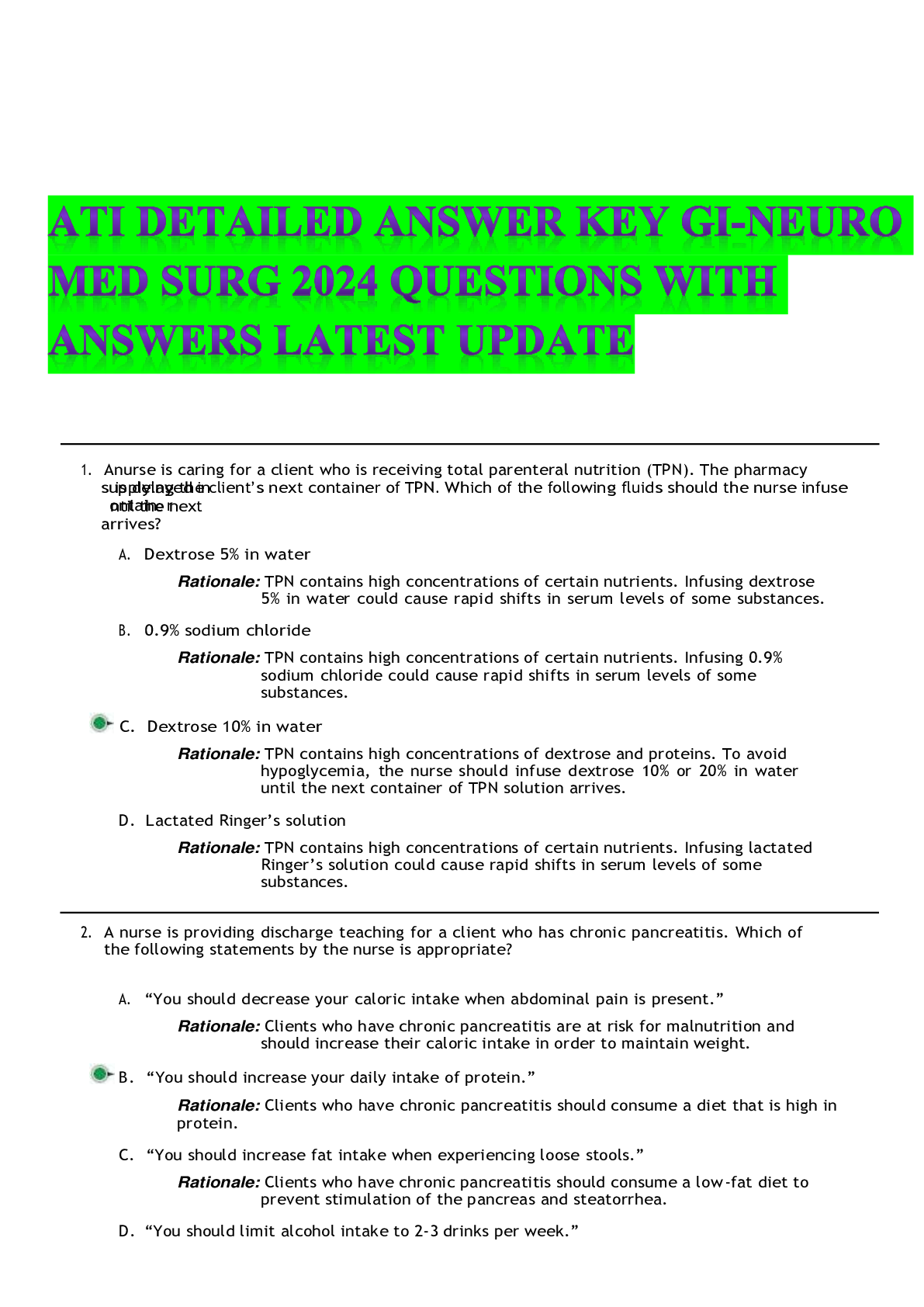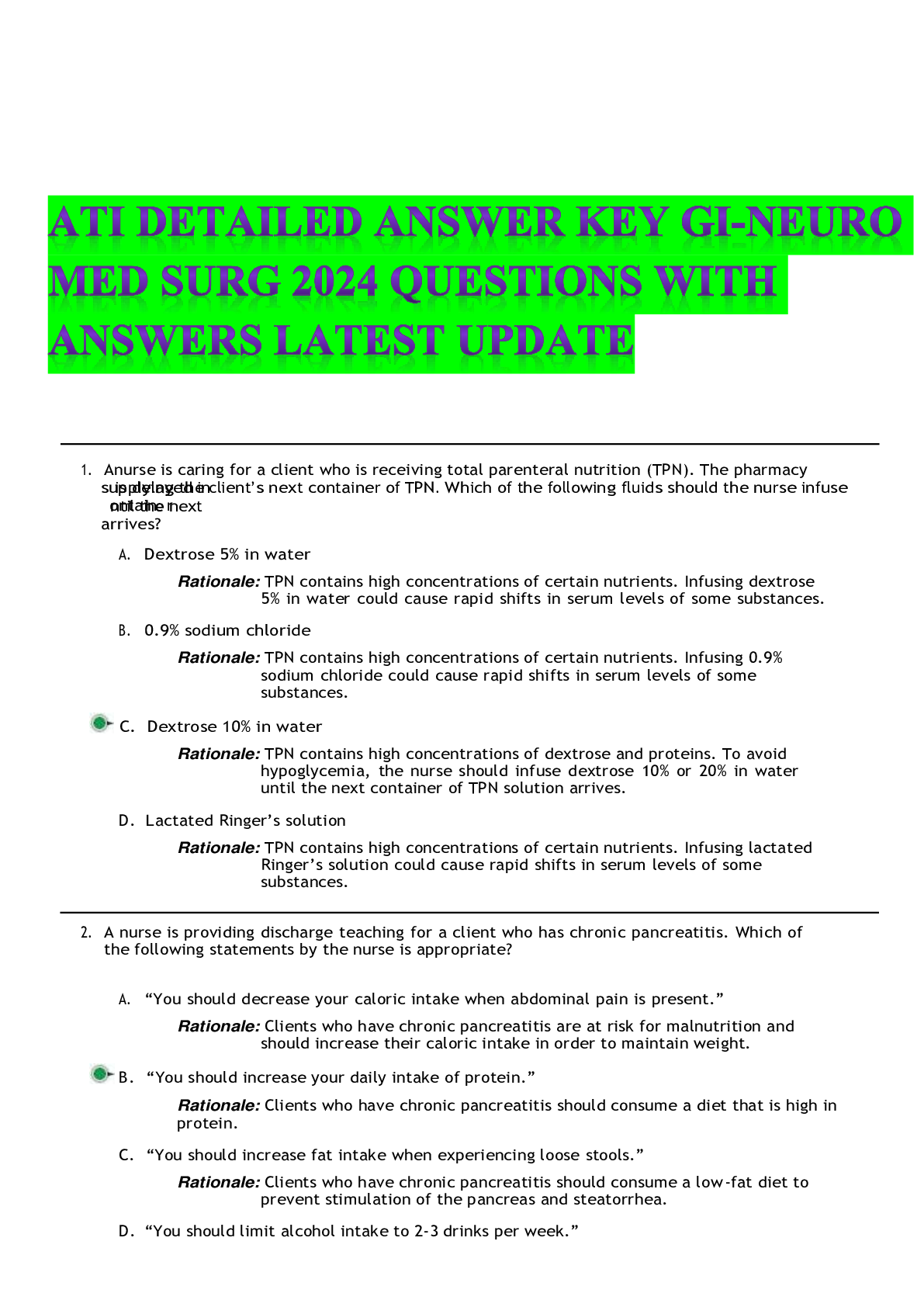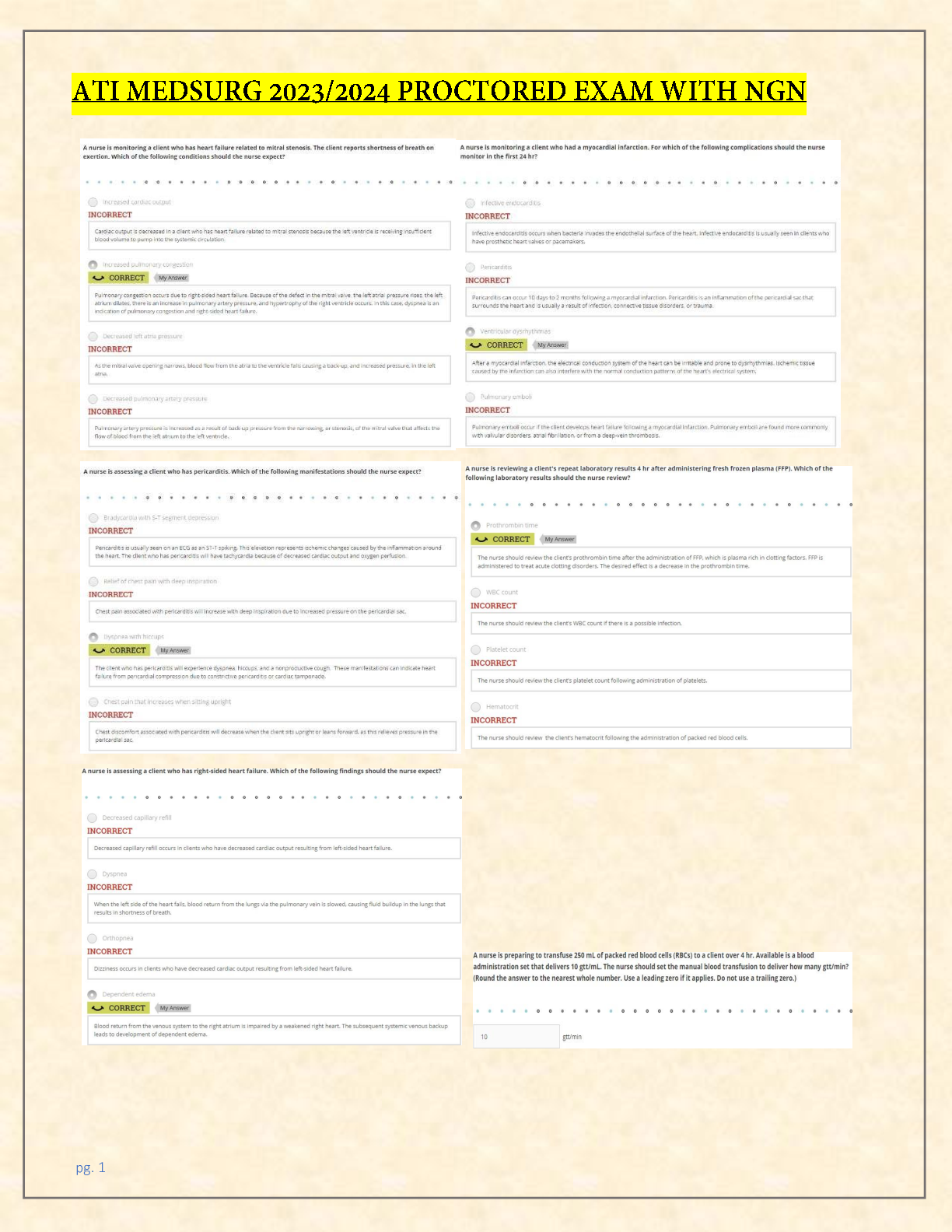*NURSING > ATI MEDICAL SURGICAL > NURSING 325-GI And Neuro ATI Practice Questions With Detailed Answer Key -1. University of Texas. (All)
NURSING 325-GI And Neuro ATI Practice Questions With Detailed Answer Key -1. University of Texas.
Document Content and Description Below
A nurse is caring for a client who is receiving total parenteral nutrition (TPN). The pharmacy is delayed in supplying the client’s next container of TPN. Which of the following fluids should the n... urse infuse until the next container arrives? Rationale: TPN contains high concentrations of certain nutrients. Infusing dextrose 5% in water could cause rapid shifts in serum levels of some substances. A. Dextrose 5% in water Rationale: TPN contains high concentrations of certain nutrients. Infusing 0.9% sodium chloride could cause rapid shifts in serum levels of some substances. B. 0.9% sodium chloride Rationale: TPN contains high concentrations of dextrose and proteins. To avoid hypoglycemia, the nurse should infuse dextrose 10% or 20% in water until the next container of TPN solution arrives. C. Dextrose 10% in water Rationale: TPN contains high concentrations of certain nutrients. Infusing lactated Ringer’s solution could cause rapid shifts in serum levels of some substances. D. Lactated Ringer’s solution 1. A nurse is providing discharge teaching for a client who has chronic pancreatitis. Which of the following statements by the nurse is appropriate? Rationale: Clients who have chronic pancreatitis are at risk for malnutrition and should increase their caloric intake in order to maintain weight. A. “You should decrease your caloric intake when abdominal pain is present.” Rationale: Clients who have chronic pancreatitis should consume a diet that is high in protein. B. “You should increase your daily intake of protein.” Rationale: Clients who have chronic pancreatitis should consume a low-fat diet to prevent stimulation of the pancreas and steatorrhea. C. “You should increase fat intake when experiencing loose stools.” Rationale: Clients who have chronic pancreatitis should avoid alcohol intake to prevent stimulation of the pancreas. D. “You should limit alcohol intake to 2-3 drinks per week.” 2. CAA_DetailedAnswerKey created 10/07/2015 page 1 of 53 Detailed Answer Key GI/Neuro Med Surg A nurse monitors for increased intracranial pressure (ICP) on a client who has a leaking cerebral aneurysm. If the client manifests increased intracranial pressure, which of the following findings should the nurse expect? (Select all that apply) A. Violent headache B. Neck pain and stiffness C. Slurred speech D. Projectile vomiting E. Rapid loss of consciousness 3. Rationale: Violent headache is correct. The client who manifests ICP should display a violent headache Neck pain and stiffness is incorrect. The client who manifests ICP should not display neck pain and stiffness Slurred speech is correct. The client who manifests ICP may display slurred speech. Projectile vomiting is correct. The client who manifests ICP may display sudden onset of projectile vomiting. Rapid loss of consciousness is correct. The client who manifests ICP may display a sudden rapid loss of consciousness. CAA_DetailedAnswerKey created 10/07/2015 page 2 of 53 Detailed Answer Key GI/Neuro Med Surg A nurse is assessing an adult who has meningococcal meningitis. Which of the following is an appropriate finding by the nurse? Rationale: The nurse should find as a sign of meningococcal meningitis severe headache due to meningeal inflammation. A. Severe headache Rationale: The nurse should find as a sign of meningococcal meningitis tachycardia not bradycardia. B. Bradycardia Rationale: The nurse should find as a sign of meningococcal meningitis decreased not increased muscle tone. C. Increased muscle tone Rationale: The nurse should find as a sign of meningococcal meningitis disorientation not orientation to time, person, and place. D. Oriented to time, person, place 4. A nurse admits a client who has a concussion for overnight observation. Alert and oriented on admission, the client reports a headache along with neck pain and generalized muscle aches. The nurse knows that a manifestation considered an early indication of increased intracranial pressure (ICP) is Rationale: Alterations in vital signs, including increased systolic pressure, widening pulse pressure and bradycardia may be later signs of increased ICP. A. bradycardia. Rationale: Ipsilateral or bilateral pupil dilation occurs when increasing intracranial pressure displaces the brain against the optic nerve, but pupil dilation is not an early sign of increased ICP. B. ipsilateral pupil dilation. Rationale: Alterations in vital signs, including increased systolic pressure, widening pulse pressure and bradycardia may be later signs of increased ICP. C. widening pulse pressure. Rationale: Increased intracranial pressure is a condition in which the pressure of the cerebrospinal fluid or brain matter within the skull exceeds the upper limits for normal. An early sign of increasing ICP is lethargy. D. lethargy. 5. CAA_DetailedAnswerKey created 10/07/2015 page 3 of 53 Detailed Answer Key GI/Neuro Med Surg A nurse is caring for a client following a CVA and observes the client experiencing severe dysphagia. The nurse notifies the provider. Which of the following nutritional therapies will likely be prescribed? Rationale: Making the client NPO provides no nutritional support and will not likely be prescribed. A. NPO until dysphagia subsides Rationale: Supplements via nasogastric tube provide enteral nutrition for clients who are at risk for aspiration caused by a diminished gag reflex or difficulty swallowing. This nutritional therapy will likely be prescribed. B. Supplements via nasogastric tube Rationale: Total parenteral nutrition is initiated when the GI tract cannot be used for the ingestion, digestion, and absorption of essential nutrients. This nutritional therapy will not likely be prescribed. C. Initiation of total parenteral nutrition Rationale: A soft residue diet would place the client at risk for aspiration due to difficulty swallowing solids; therefore, this nutritional therapy will not likely be prescribed. D. Soft residue diet 6. A nursing is caring for a client who has aphasia following a stroke. A family member asks the nurse how she should communicate with the client. Which of the following is an appropriate response by the nurse? Rationale: Nonverbal cues enhance the client’s ability to comprehend and use language. A. "Incorporate nonverbal cues in the conversation." Rationale: Simple questions requiring yes/no responses are better understood by the client. B. "Ask multiple choice questions as part of the conversation." Rationale: Tone of voice is understood by clients with aphasia, unless they have a hearing impairment. C. "Use a higher-pitched tone of voice when speaking." Rationale: It is important to respect the client and use age-appropriate communication. D. "Use simple child-like statements when speaking." 7. CAA_DetailedAnswerKey created 10/07/2015 page 4 of 53 Detailed Answer Key GI/Neuro Med Surg A nurse is caring for a client in liver failure with ascites who is receiving spironolactone (Aldactone). Which of the following outcomes should the nurse expect from this client’s medication therapy? Rationale: The primary action of spironolactone is to increase sodium excretion in the urines. A. Increased sodium excretion Rationale: Spironolactone is a diuretic, thus it should increase urine output. B. Decreased urinary output Rationale: Spironolactone is potassium-sparing. C. Increased potassium excretion Rationale: Spironolactone promotes the excretion of chloride in the urine. D. Decreased chloride excretion 8. A nurse is caring for a client who has meningitis, a temperature of 39.7° C (103.5° F), and is prescribed a hypothermia blanket. While using this therapy, the nurse should know that the client must carefully be observed for which of the following complications? Rationale: Dehydration is not considered a complication of the hypothermia blanket therapy. A. Dehydration Rationale: Seizures are not considered a complication of the hypothermia blanket therapy. B. Seizures Rationale: Burns are associated with the improper use of heating pads, not a hypothermia blanket. C. Burns Rationale: The hypothermia (cooling) blanket, if used improperly (at inappropriately low temperatures, or without skin protection), can cause the client to cool too fast, leading to shivering. To prevent heat loss from the skin, the body becomes peripherally vasoconstricted in an attempt to reduce heat loss. The body will also try to increase heat production by shivering, which can increase the metabolic rate by two to five times and in doing so greatly raise oxygen consumption. D. Shivering 9. CAA_DetailedAnswerKey created 10/07/2015 page 5 of 53 Detailed Answer Key GI/Neuro Med Surg An acute care nurse is caring for an adult client who is undergoing evaluation for a possible brain tumor. When performing a neurological examination, which of following is the most reliable indicator of cerebral status? Rationale: The nurse should include pupil response as part of a neurological examination; however, it is not the most reliable indicator of cerebral status. A. Pupil response Rationale: The nurse should include deep tendon reflexes as part of a neurological examination; however, it is not the most reliable indicator of cerebral status. B. Deep tendon reflexes Rationale: The nurse should include muscle strength as part of a neurological examination; however, it is not the most reliable indicator of cerebral status. C. Muscle strength [Show More]
Last updated: 1 year ago
Preview 1 out of 53 pages
.png)
Reviews( 0 )
Document information
Connected school, study & course
About the document
Uploaded On
Jan 22, 2021
Number of pages
53
Written in
Additional information
This document has been written for:
Uploaded
Jan 22, 2021
Downloads
0
Views
62

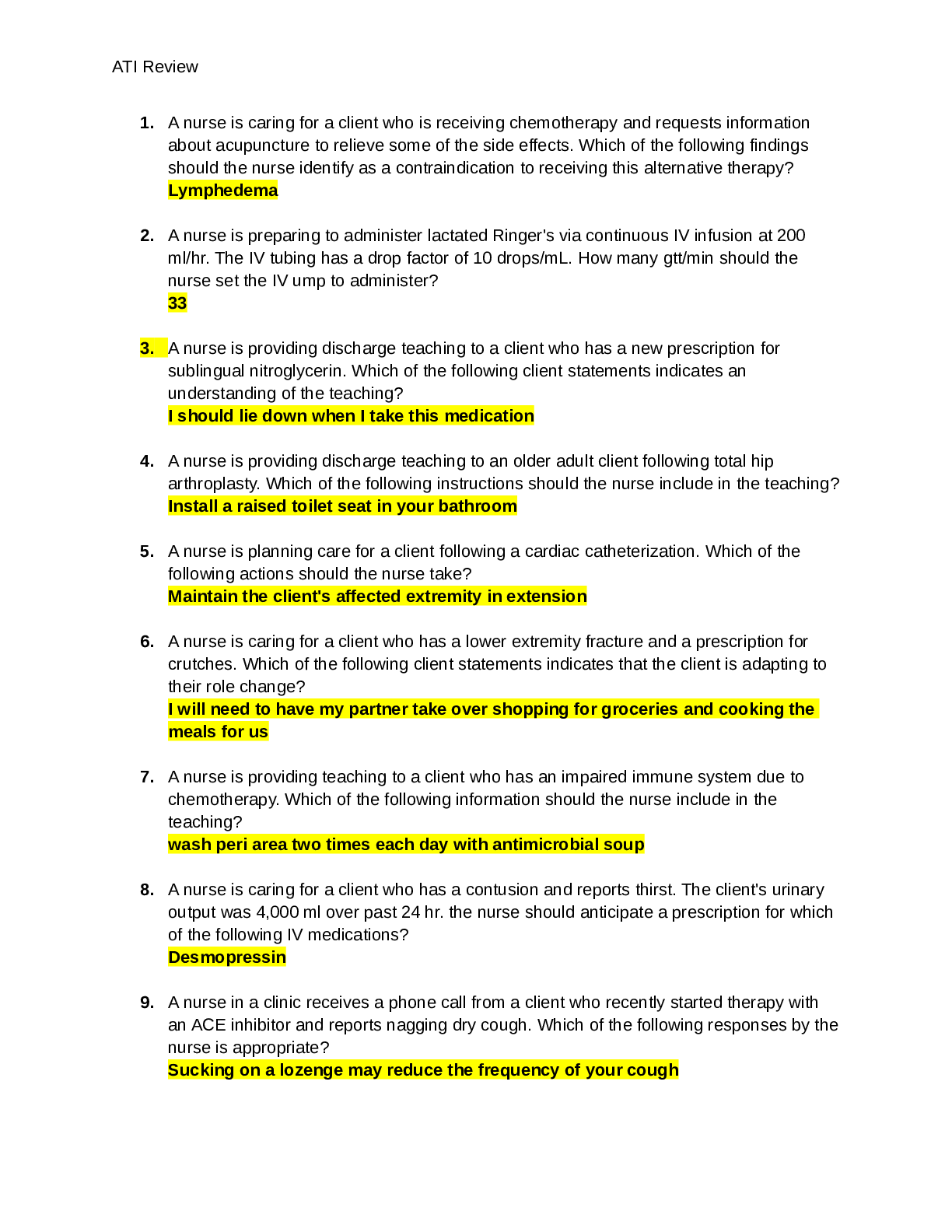
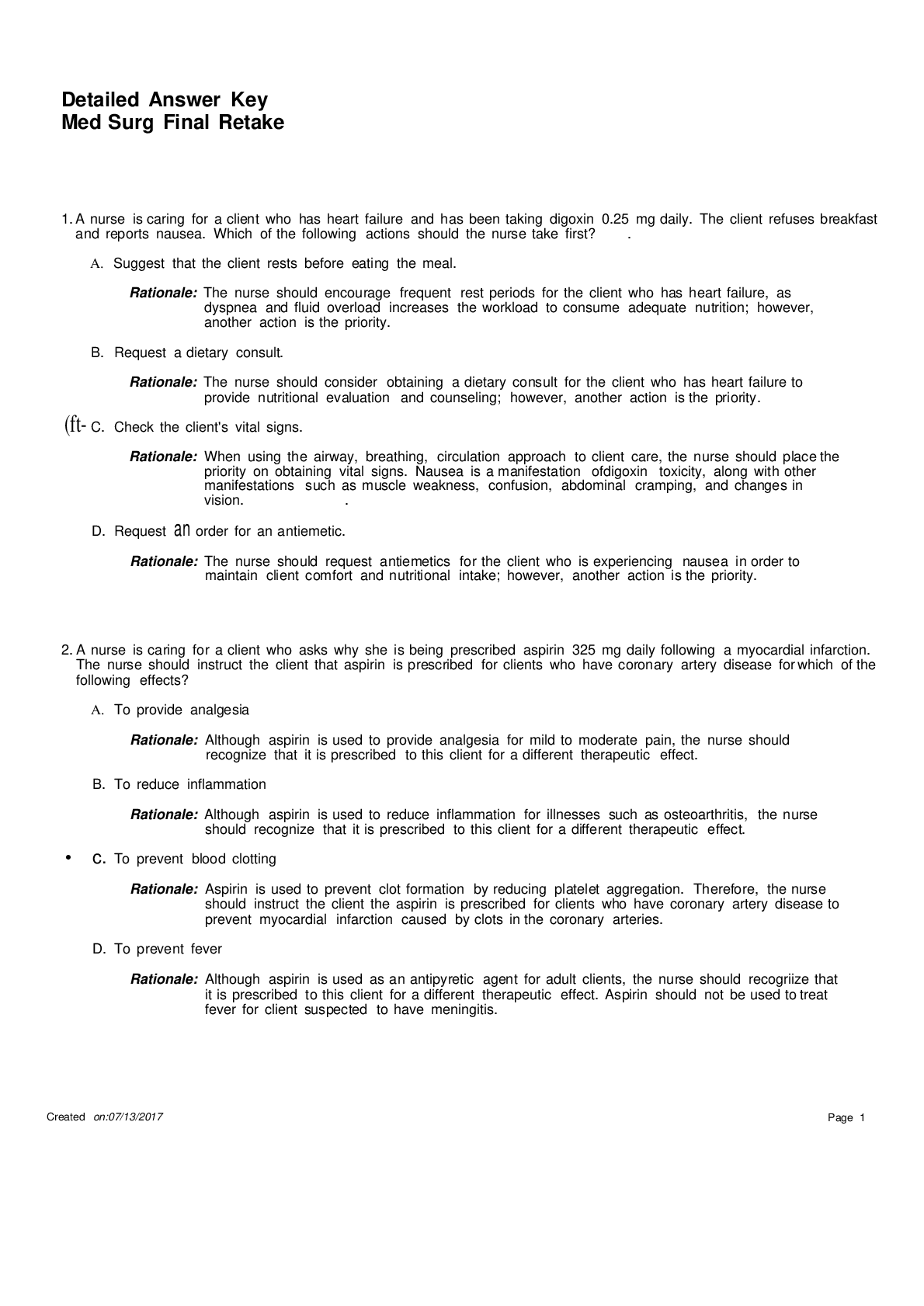
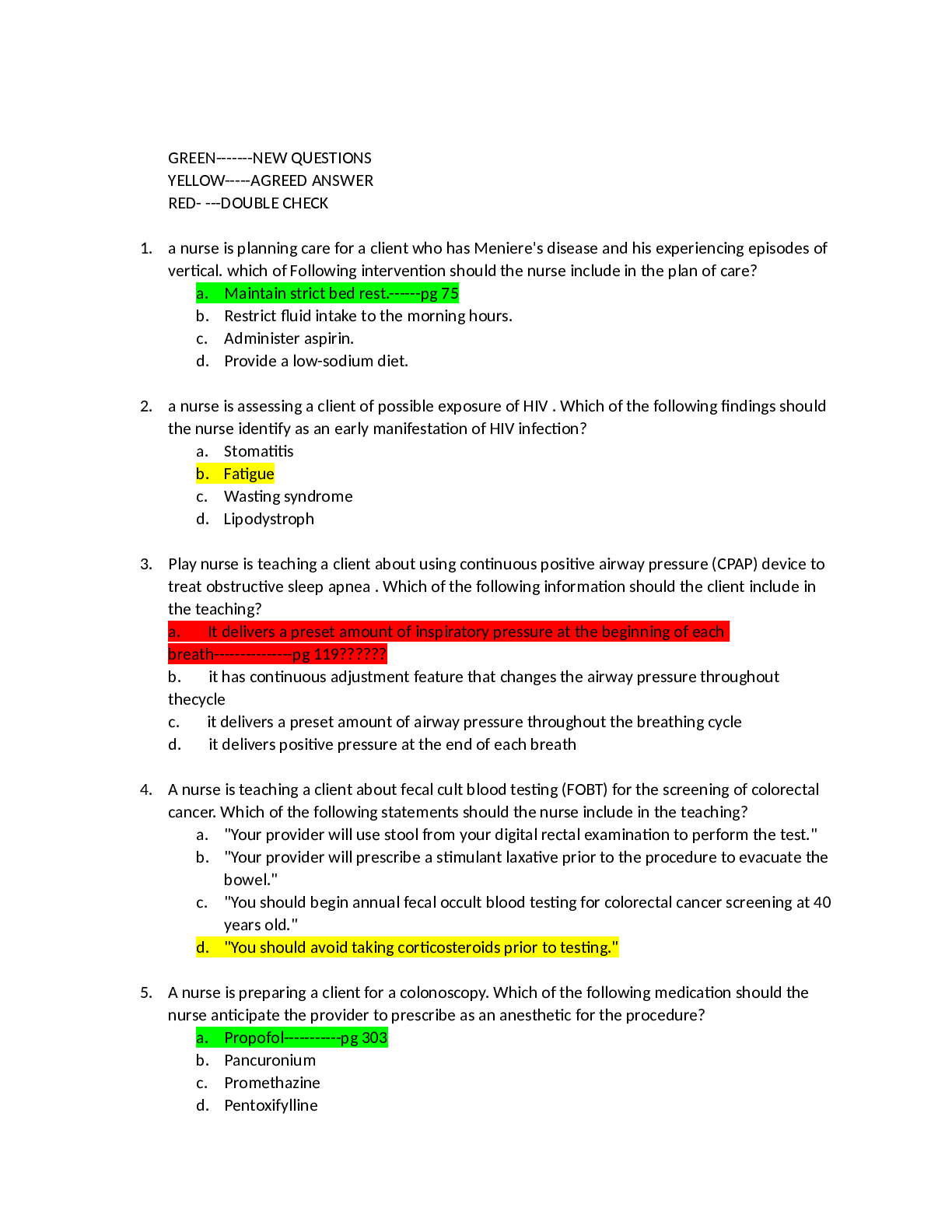
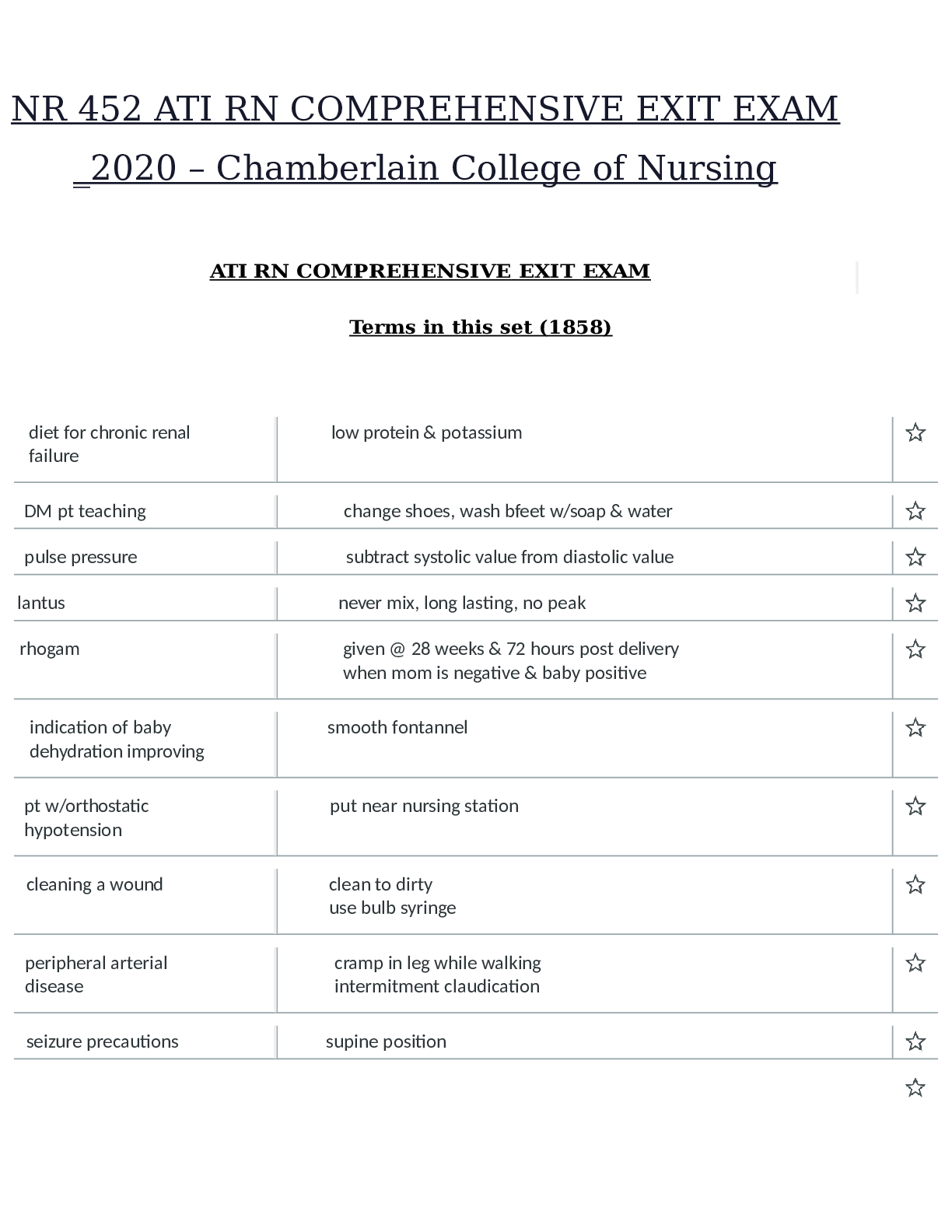
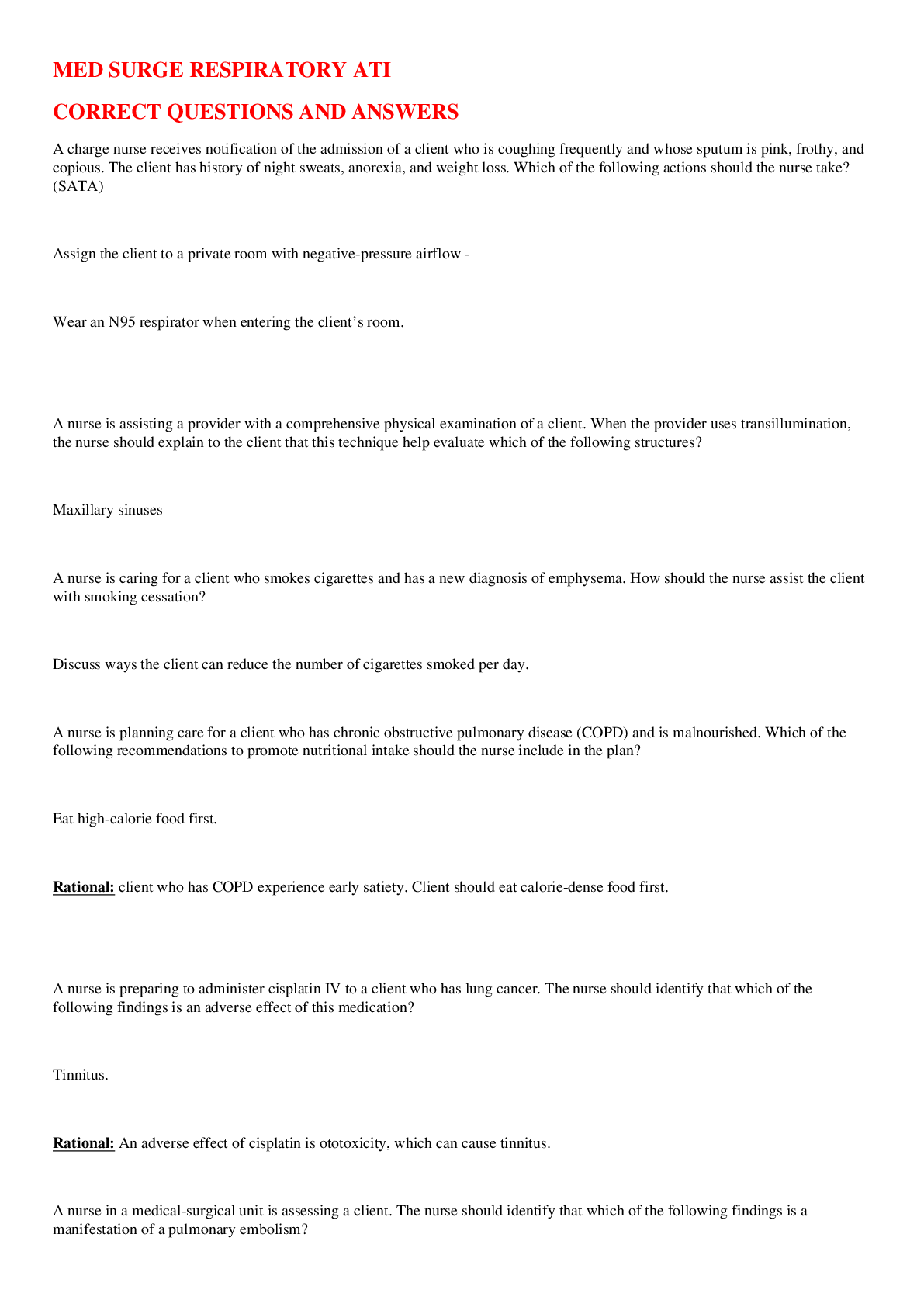
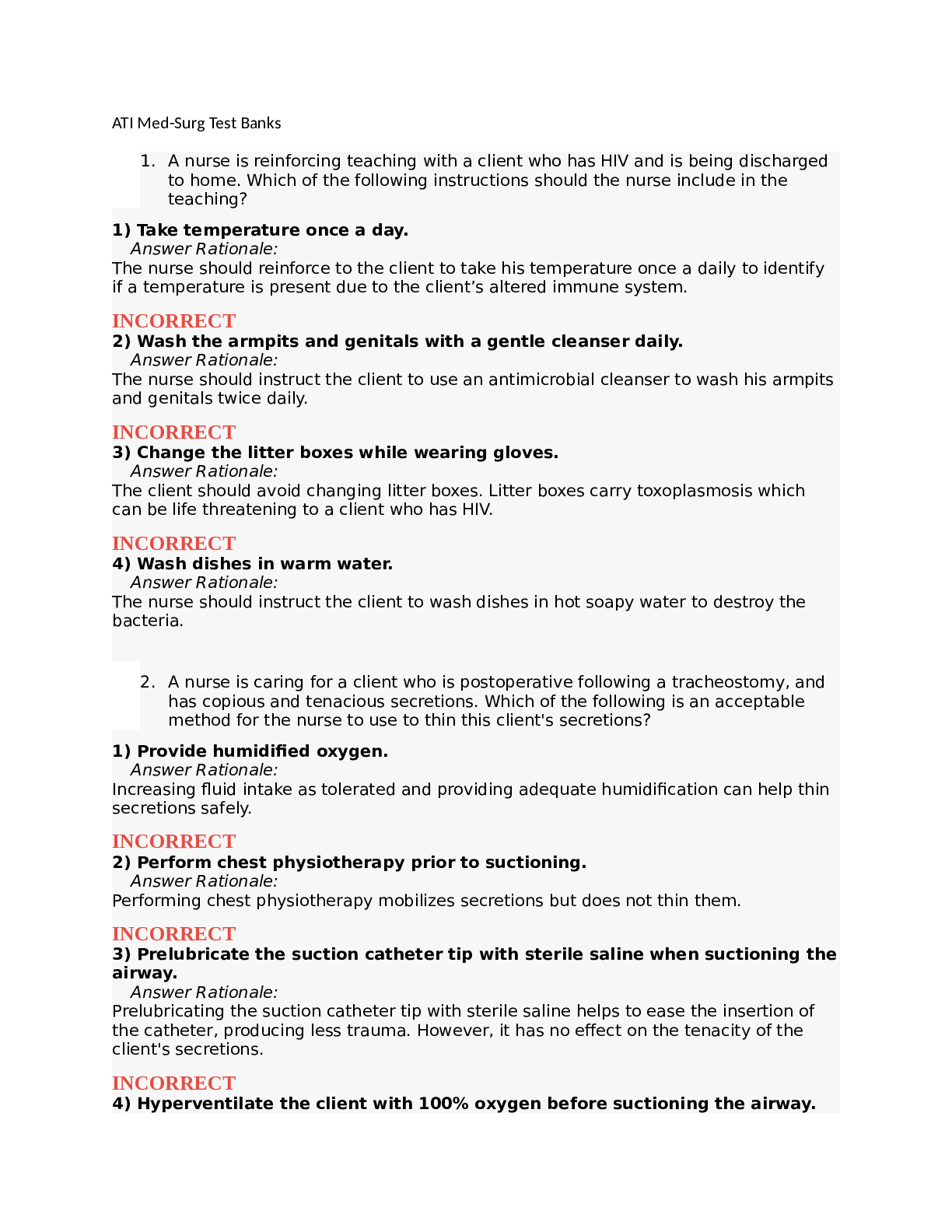
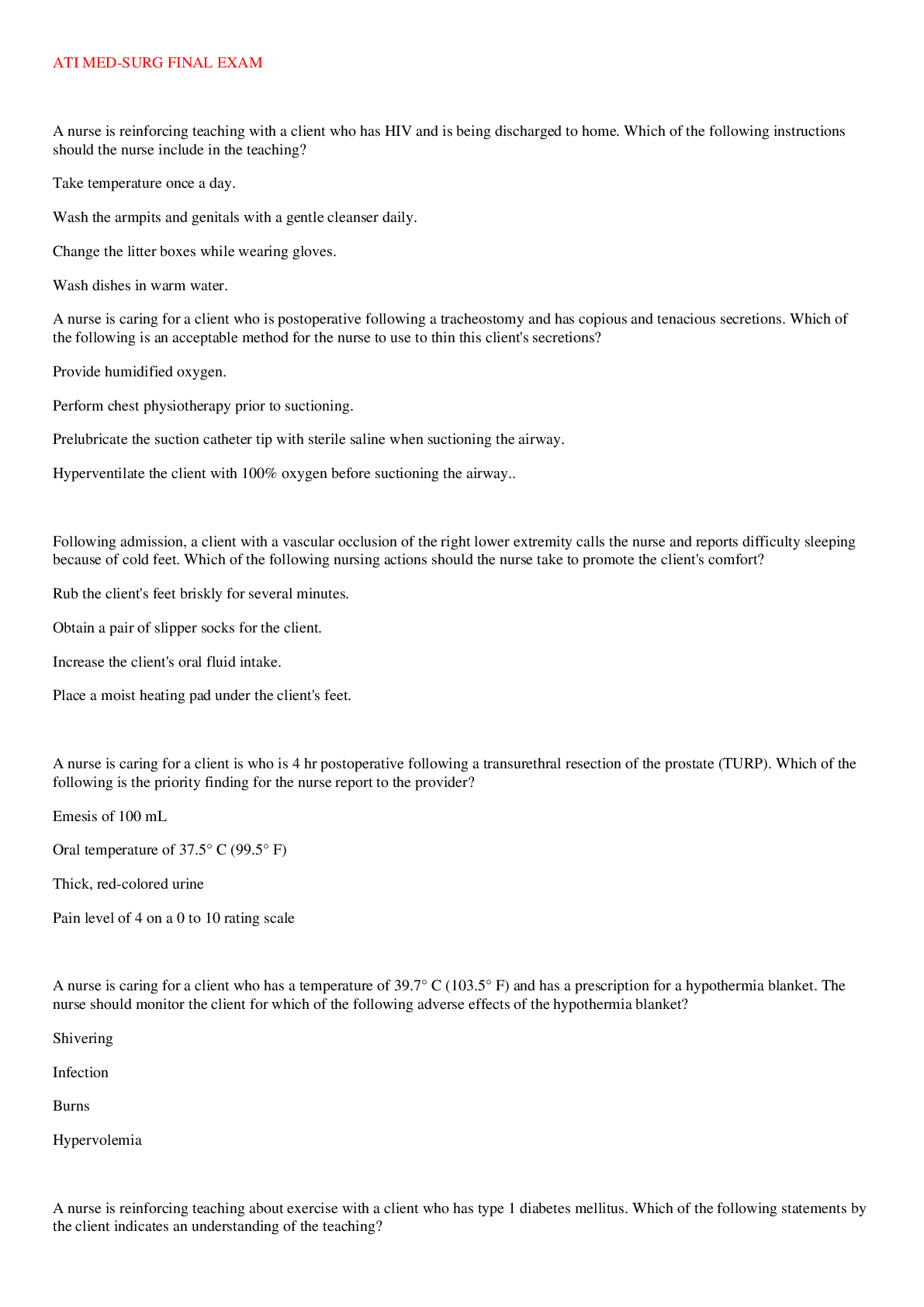
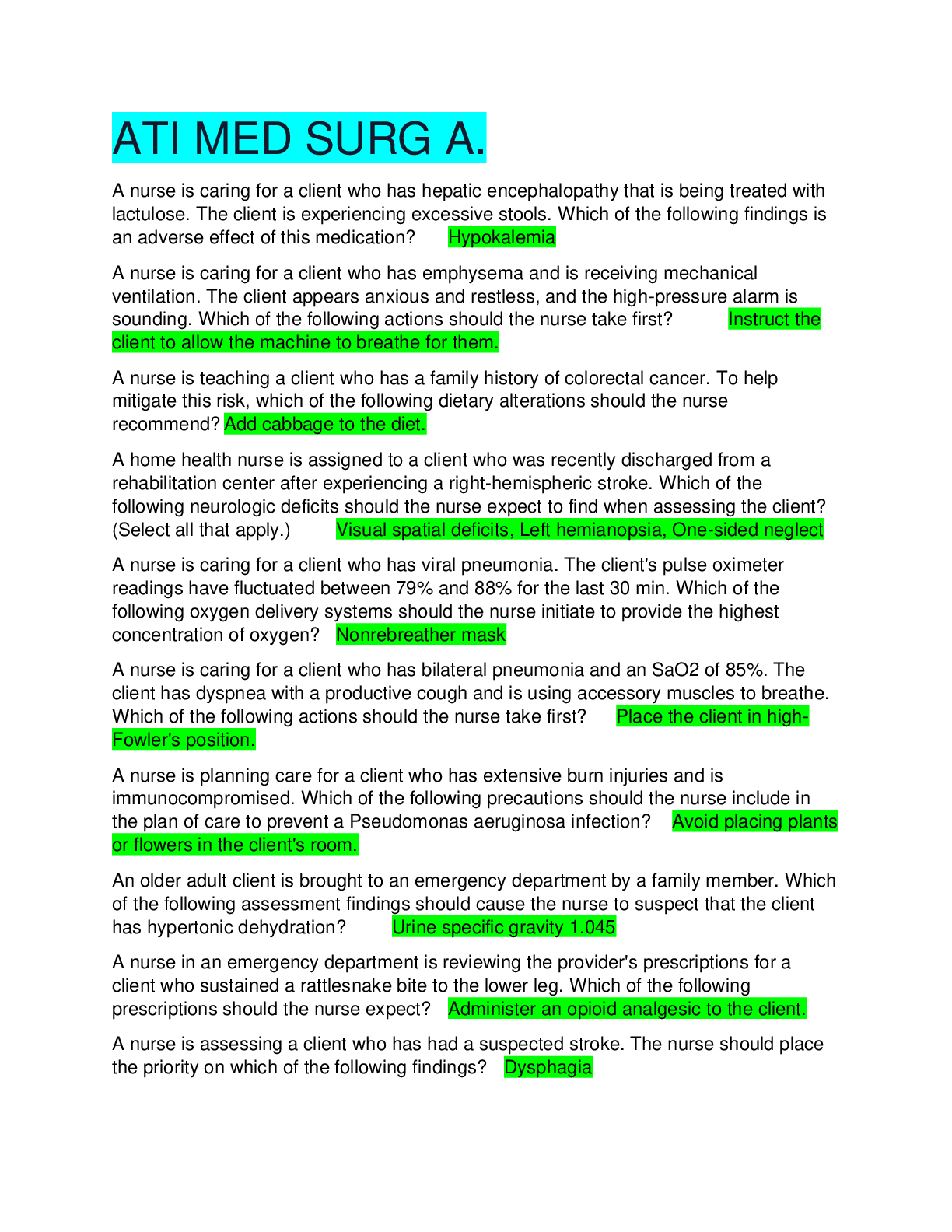
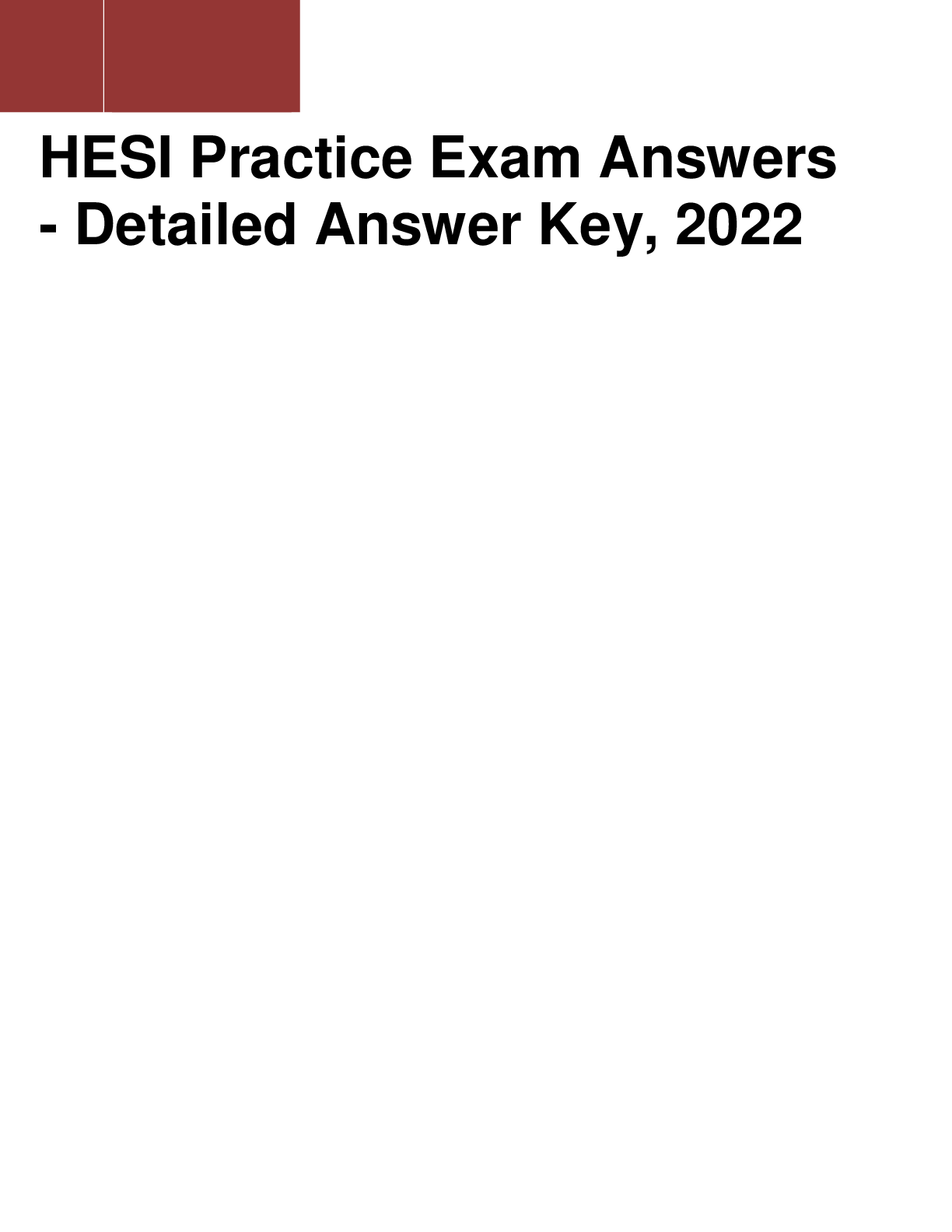


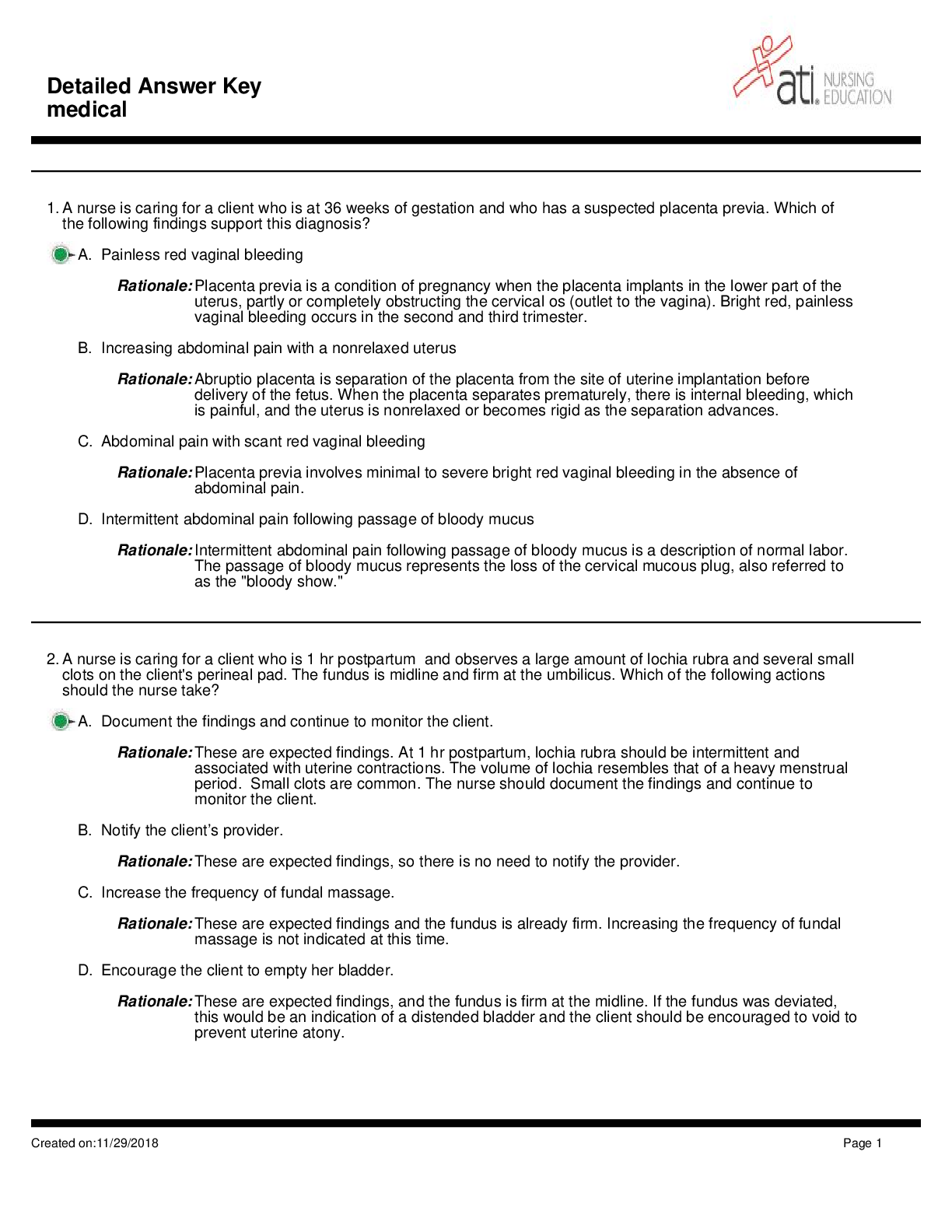
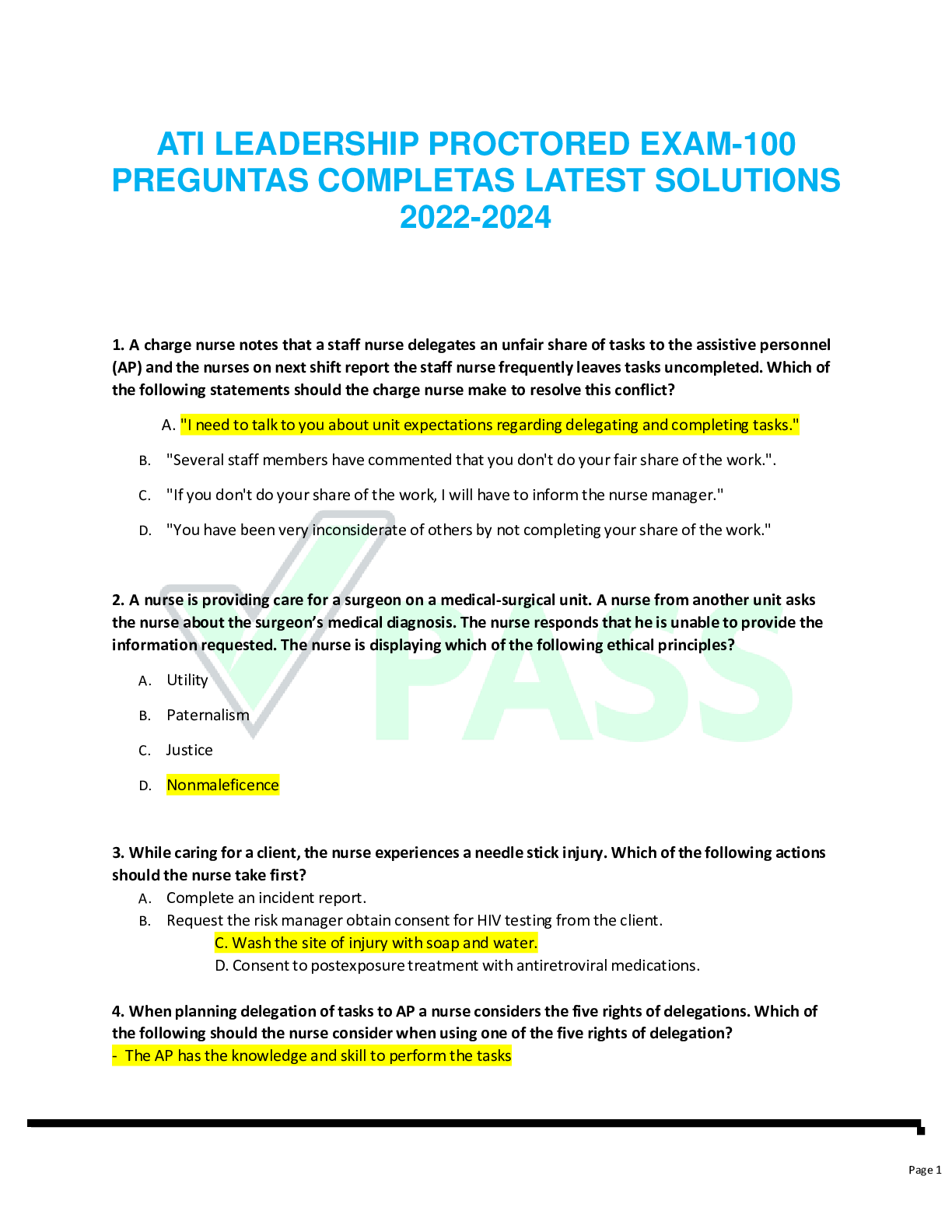
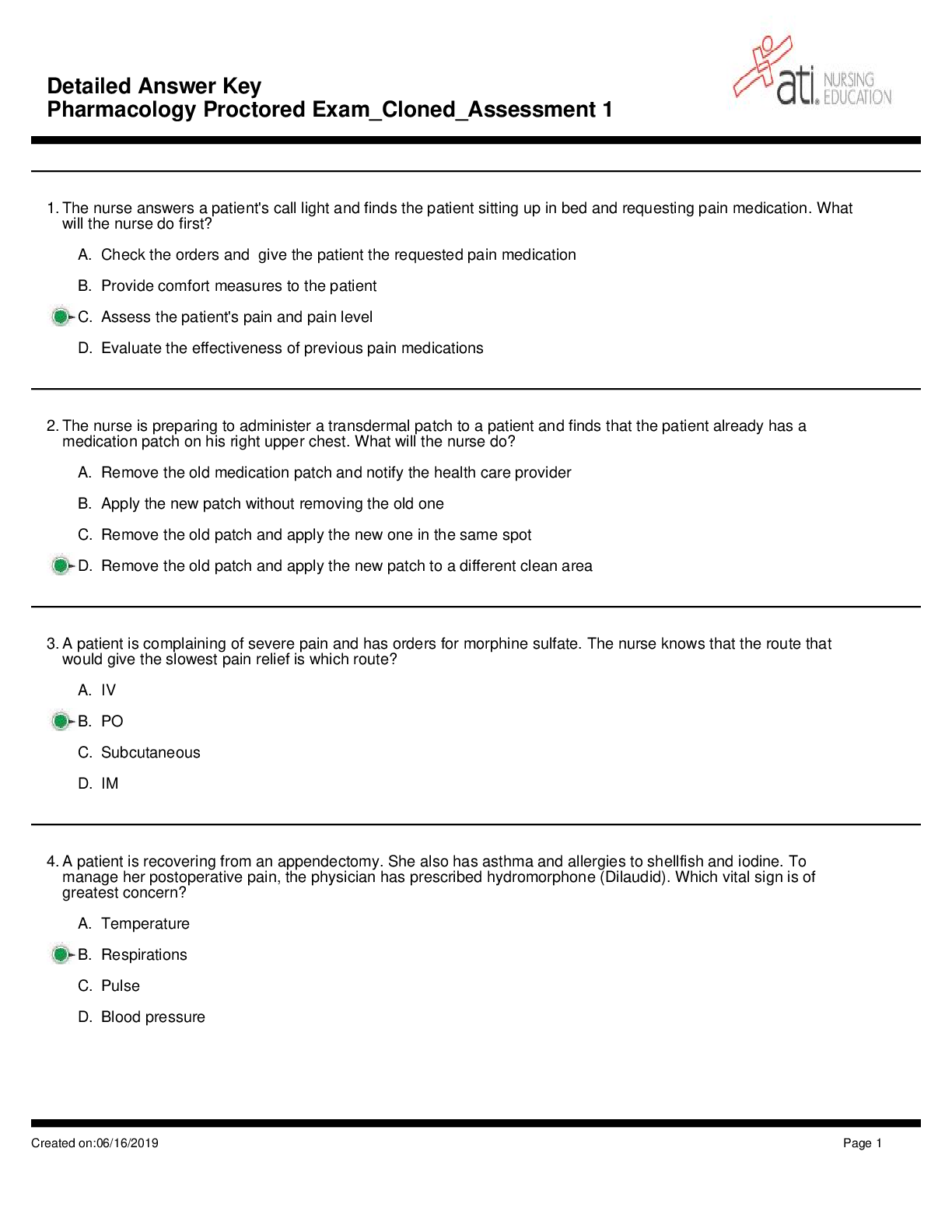
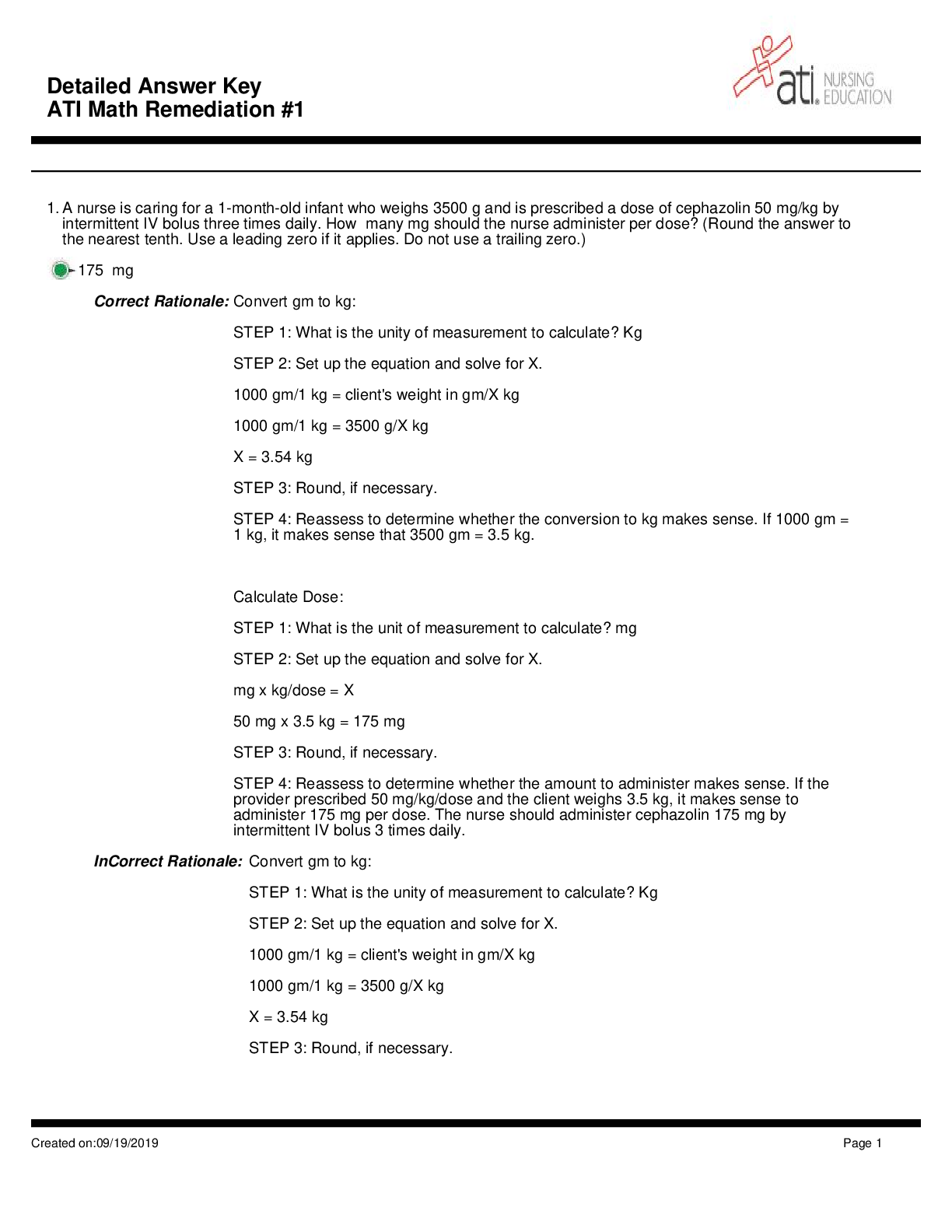
.png)

